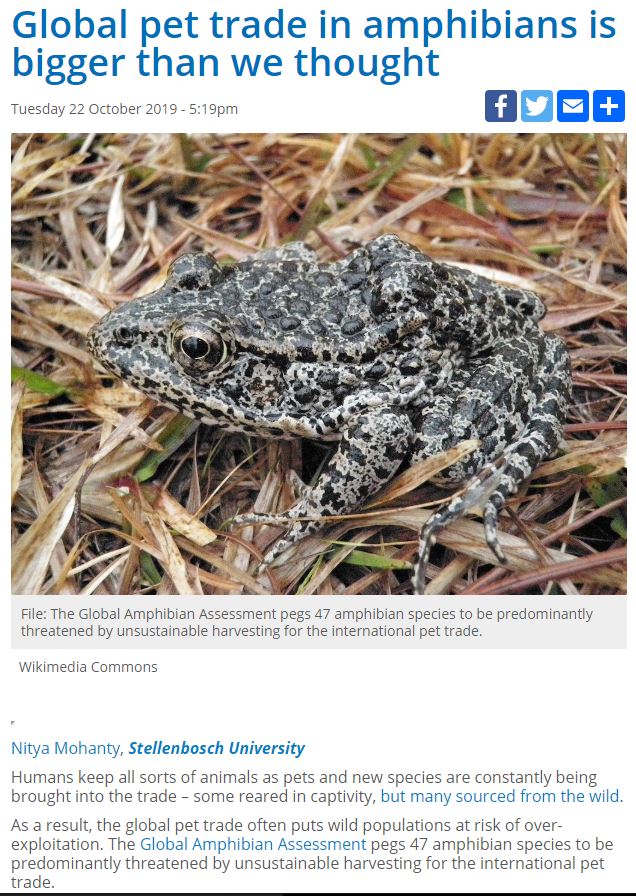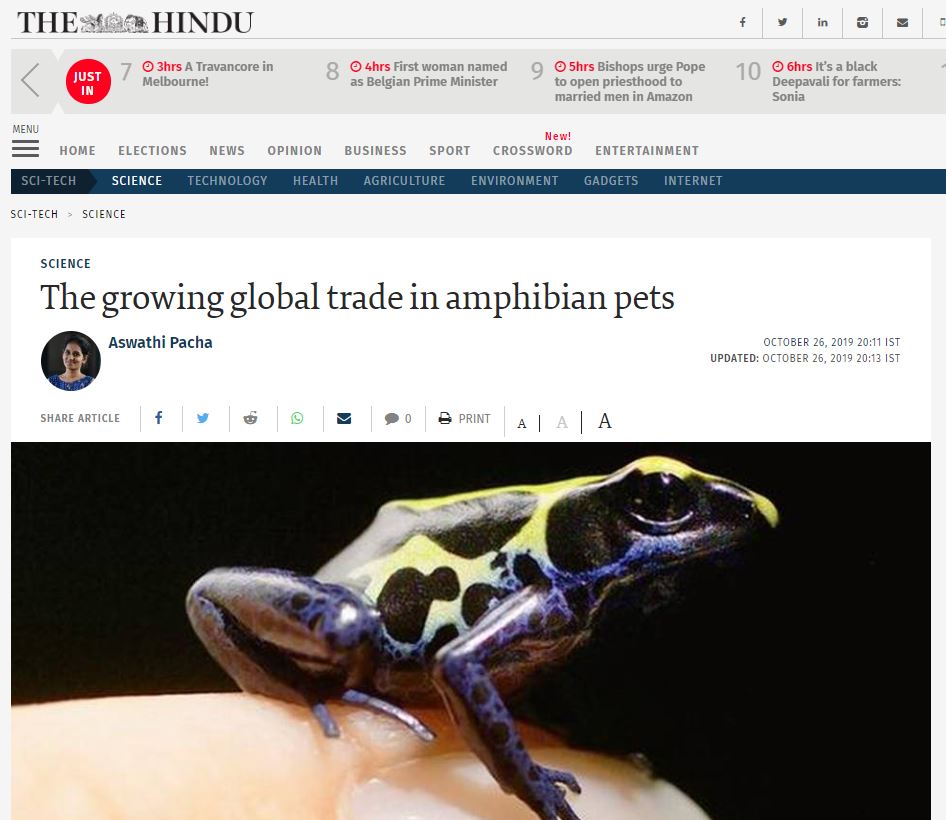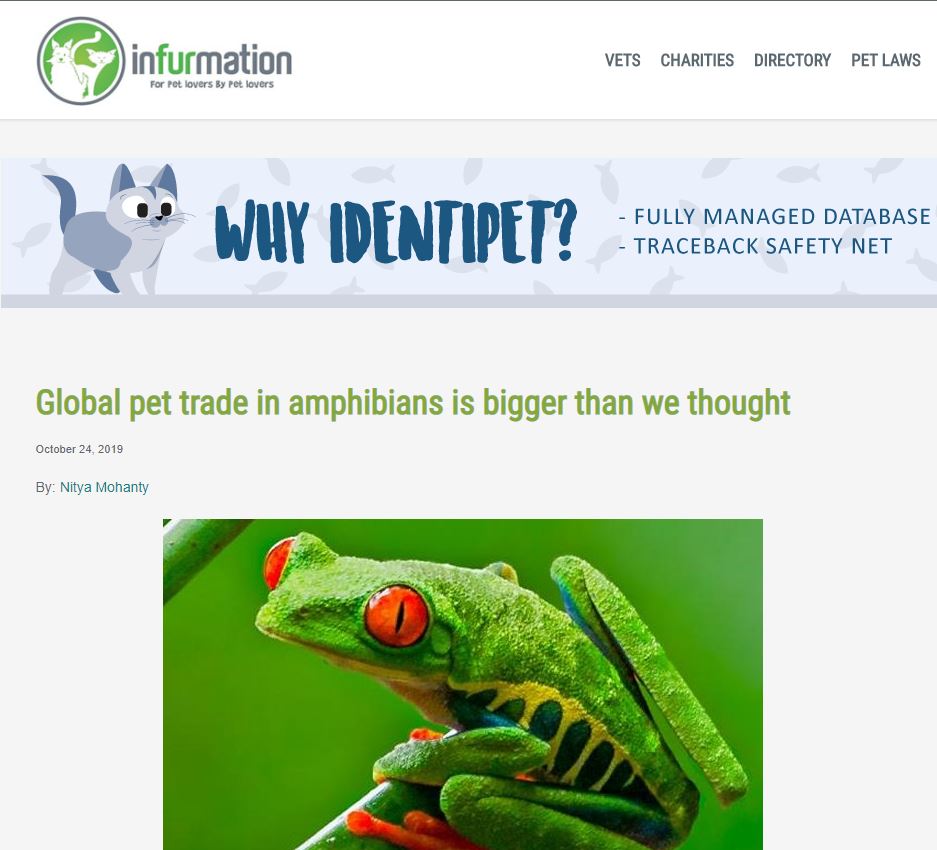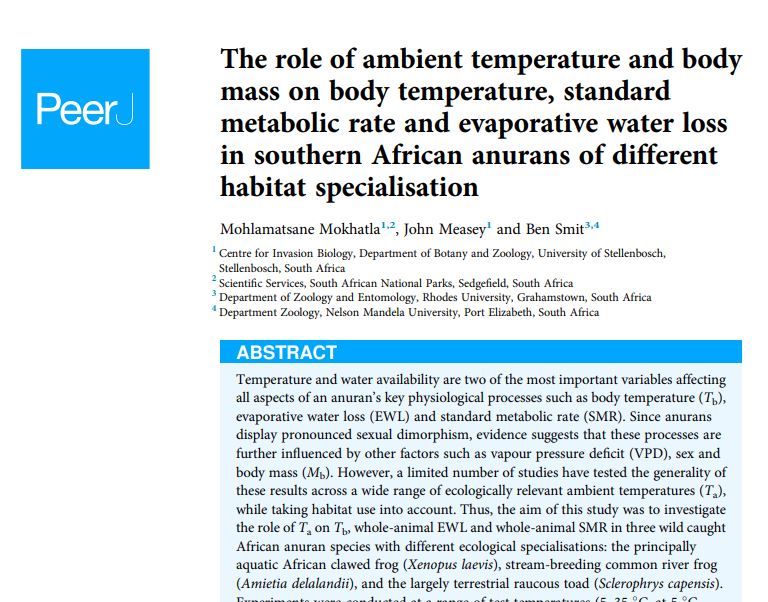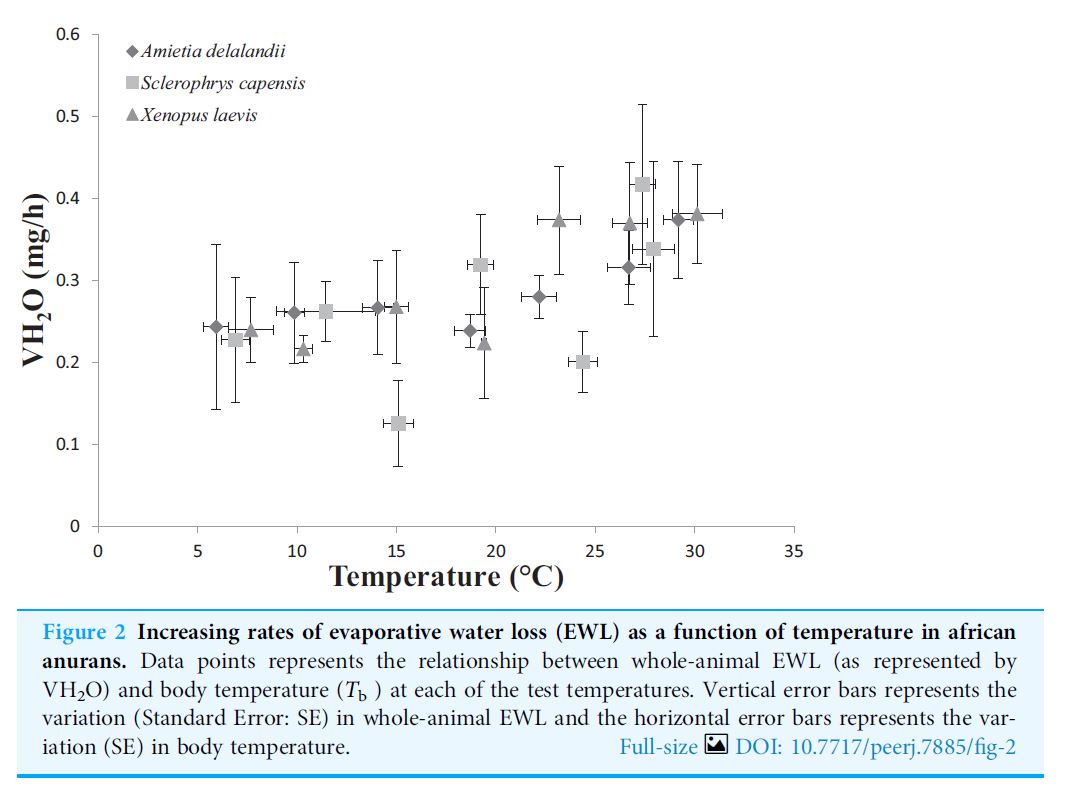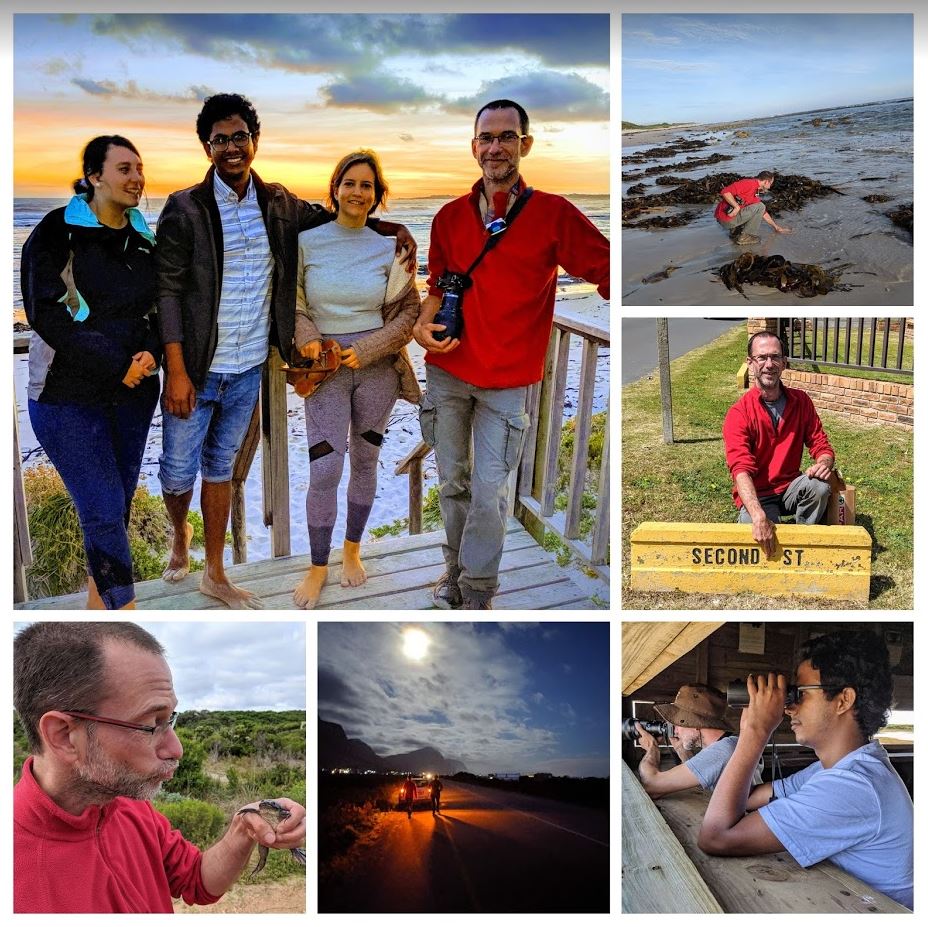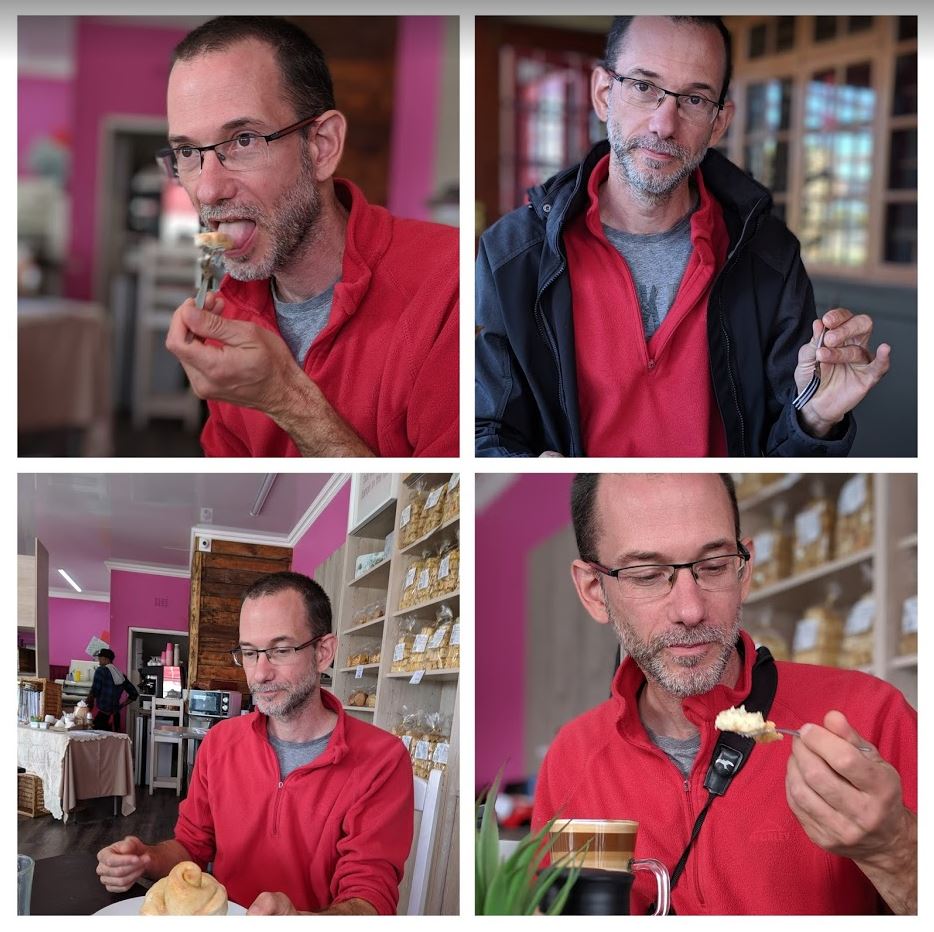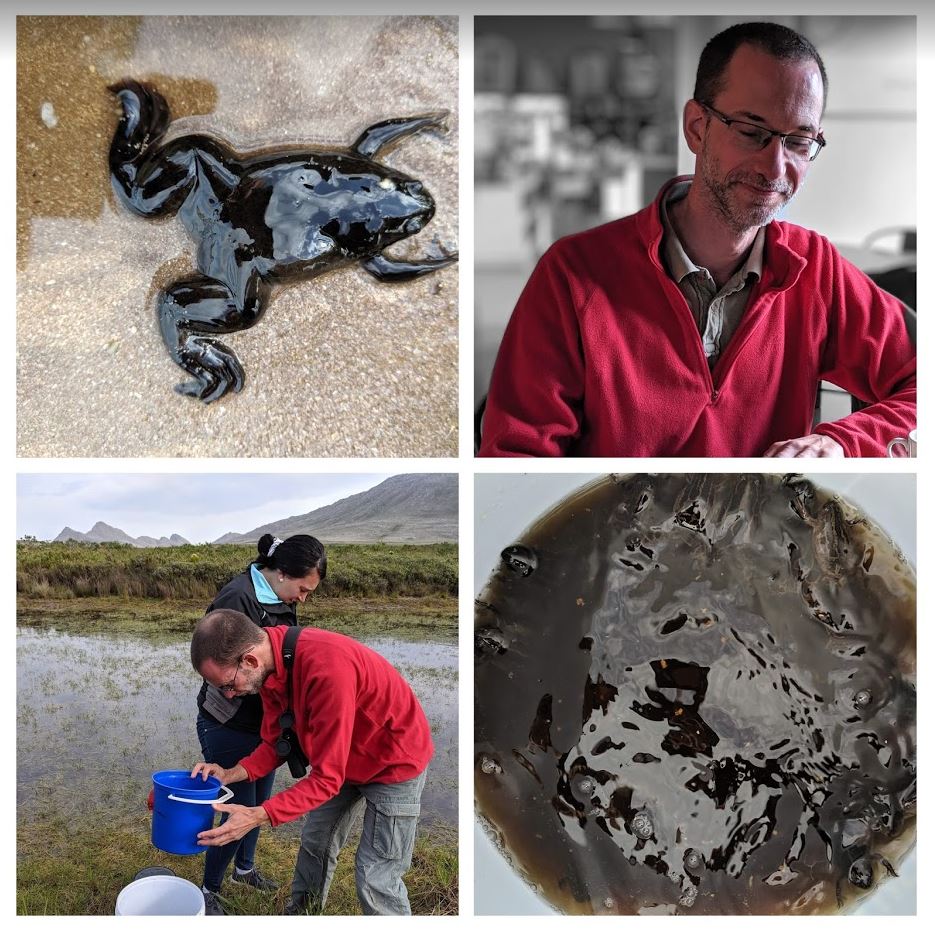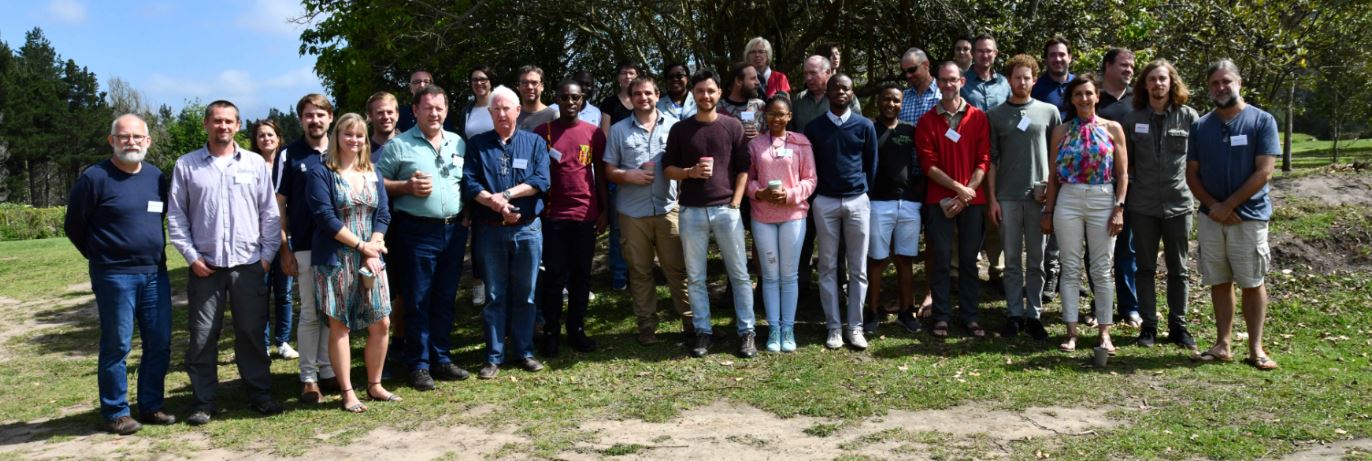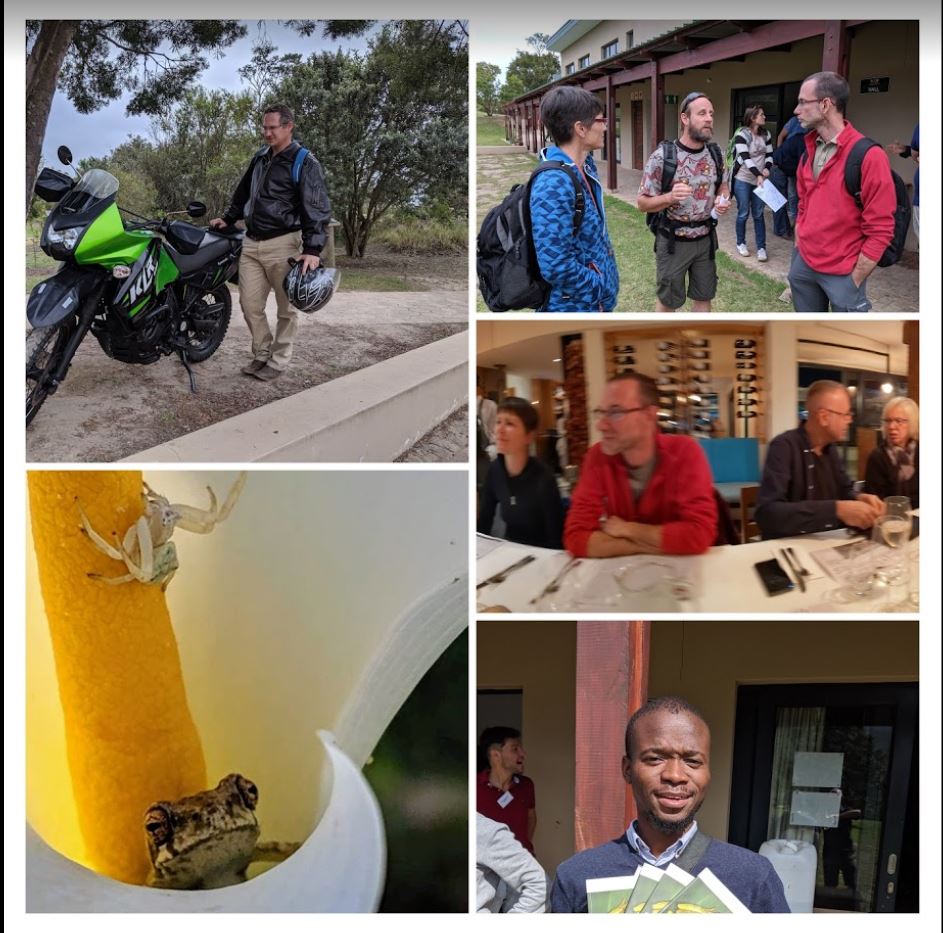Publicity for Nitya’s pet-trade paper
Not content with having produced a very popular paper on the pet-trade in amphibians (see blog post here or read the article here), Nitya went on to write a popular article for The Conversation Africa, which has garnered even more attention.
In his Conversation piece, Nitya explains more about the very real dangers that are associated with the pet-trade. Firstly, for animals that are collected from the wild, and for those that are mass bred in captivity. One of the problems that we face is that traders are looking for new species all the time, and this constant search for new ‘products’ is likely to lead to exploitation, and the danger of releasing lots of propagules of a new invasion. He underlines that there is responsibility across the board, from traders to owners.
This story was picked up by eNCA, a TV broadcasting company that covers the African continent. Nitya was interviewed live by Jeremy Maggs, and shared his thoughts on why more attention needs to be paid to the growing trade in exotic pets. You can watch the interview in full on YouTube
Always looking for a story with #MohantyMagic, The Hindu picked up the story and wrote their own piece on the article. They even used a sound bite from Nitya’s co-author!
Interestingly, the Conversation article has been picked up by other news outlets including Infurmation, a site promoting responsibility for pet lovers! Let’s hope that Nitya’s message strikes a chord.

